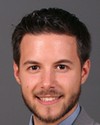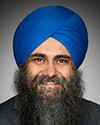Thank you, Madam Chairperson and members of the committee.
I'm pleased to be back before the committee today to speak to Health Canada's position on the impact of microwaves on human health.
In April, when this issue was last presented before the committee, I spoke to you of Health Canada's awareness of concerns from some communities of stakeholders about the possible effects of radio frequency electromagnetic emissions on the health of Canadians, including our children. These ongoing concerns received significant press, largely buoyed by the media and by a small yet very vocal group of scientists; however, in many instances, the information communicated is misrepresented.
Health Canada acts within the authority of the Radiation Emitting Devices Act, providing advice and guideline development for electromagnetic energy emissions. Guidelines developed by Health Canada set recommended limits for safe human exposure to electromagnetic energy from various devices, including cellphones, Wi-Fi equipment, and cellphone towers. These guidelines, commonly referred to as Safety Code 6, were reviewed carefully and revised as recently as October 2009.
Health Canada's revision of Safety Code 6 followed a thorough evaluation of worldwide peer-reviewed scientific evidence and literature on the effects of radio frequency energy on biological systems. The department, furthermore, conducted its own in-house studies, also published in peer-reviewed journals, which to date do not support the position that electromagnetic energy emissions from cell towers and wireless technologies pose hazards to the health of Canadians.
Considering the quality of all the individual studies, the reproducibility of observed effects in different laboratories, and acceptance within the international scientific community, Health Canada established limits for human exposure that are well below the level that has been shown to cause any harm. Despite the lack of studies focused solely on children, the limits recommended for general public exposure were designed to provide protection to all age groups, including children, if exposed on a continuous basis.
There's no question about the widespread exposure to cellphones and Wi-Fi in schools, boardrooms, and households across the country. However, the large majority of scientists conducting work related to electromagnetic energy agree that exposure levels encountered by Canadians in these environments are, according to the vast majority of currently available evidence, well below levels that would result in any health effects.
During my last presentation before the committee, I referenced a report cited by electromagnetic field advocates and entitled “The BioInitiative Report”. This report suggests that regulatory authorities such as Health Canada should apply precautionary approaches to sources of electromagnetic field exposure and apply much more stringent limits.
It should be noted that in the international dialogue that followed the release of the BioInitiative Report, numerous electromagnetic energy experts, associations, and countries around the world issued statements refuting claims included within the report, expressing criticism for its lack of balance, lack of new scientific evidence, exclusion of numerous studies, internal inconsistencies, and a bias toward negative outcomes.
The science underpinning the report was not peer-reviewed, which is the gold standard for scientific publications, nor was it accepted by governments around the world. Having reviewed the report, Health Canada is of the opinion that there are insufficient grounds to revise our views on the electromagnetic field health risk assessment at this time.
I should emphasize that the scientific evidence supporting Health Canada's exposure limits is verified on an ongoing basis. Our Canadian exposure limits are comparable to those of other jurisdictions, including the United States and the International Commission on Non-Ionizing Radiation Protection. To our knowledge, there is no major jurisdiction in the world that has banned Wi-Fi from schools based on scientific evidence available.
The United Kingdom recently released on their website a general position statement on Wi-Fi, stating: There is no consistent evidence to date that Wi-Fi and WLANs adversely affect the health of the general population. Based on current knowledge and experience, radio frequency exposures...from Wi-Fi are likely to be lower than those from mobile phones.
They say, “On the basis of the studies so far carried out in house” at the Health Protection Agency in the U.K., they see “no reason why Wi-Fi should not continue to be used in schools”.
Just to conclude, Health Canada is committing to protecting the health and safety of Canadians and to ensuring that our guidelines are safe. We continually evaluate the science, and the guidelines are based on up-to-date science. As with any new technology, it is a sensible precautionary principle to maintain an ongoing review to provide Canadians with reassurance.









